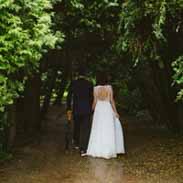Chapter 3 Egyptian Art – Art History
Unlock all answers in this set
Unlock answersquestion
abstract
answer
theoretical; not concrete; nonrepresentational
question
pictographs
answer
pictures that stand for words or ideas; picture writing
question
hieratic scale
answer
size being assoiciated with importance
question
papyrus
answer
paper made from the papyrus plant by cutting it in strips and pressing it flat
question
register
answer
one of a series of superimposed bands or friezes in a pictorial narrative, or the particular levels on which motifs are placed
question
canon of proportion
answer
A rule for proportions of the human body
question
groundline
answer
in paintings and reliefs, a painted or carved baseline on which figures appear to stand
question
ka
answer
Egyptian eternal life force
question
mastaba
answer
an ancient Egyptian mudbrick tomb with a rectangular base and sloping sides and flat roof
question
veneer
answer
an ornamental coating to a building
question
serdab
answer
A small concealed chamber in Egyptian mastaba for the statue of the deceased for the Ka to find
question
sarcophagus
answer
an ancient marble or stone coffin, often decorated with artwork and inscriptions
question
necropolis
answer
Literally this means \"city of the dead\". In Egypt it describes the Valley of the Kings and Queens, areas devoted to burial.
question
ziggurats
answer
temples built by Sumerians to honor the gods and goddesses they worshipped
question
engaged column
answer
A half-round column attached to a wall.
question
attached column
answer
...
question
fluting
answer
vertical channeling, roughly semicircular in cross-section, and used principally on columns and pilasters
question
capitals
answer
the uppermost member of a column which serves as a transition from the shaft to the lintel
question
portico
answer
a porch or entrance to a building consisting of a covered and often columned area
question
rock-cut tomb
answer
Method of excavating tombs that begun during the Middle Kingdom. The burials in the Valley of the Kings are perhaps the best known Rock-cut tombs.
question
stele
answer
an ancient upright stone slab bearing markings
question
hieroglyphs
answer
pictures, characters, or symbols standing for words, ideas, or sounds; ancient Egyptians used instead of an alphabet like ours
question
faience
answer
glazed earthenware decorated with opaque colors, egyptian
question
cartouche
answer
an oval or oblong figure (as on ancient Egyptian monuments) enclosing a sovereign's name.
question
hypostyle hall
answer
a large interior room characterized by many closely spaced columns that support its roof.
question
pylons
answer
monumental gateways to an Egyptian temple by two flat, sloping walls between which is a smaller entrance
question
clerestory
answer
part of an interior wall rising above the adjacent roof with windows admitting light
question
peristyle court
answer
a many-columned court (colonnade) around an open courtyard
question
obelisk
answer
a stone pillar having a rectangular cross section tapering towards a pyramidal top (Egyptian)
question
axial plan
answer
a plan in which the parts of a building are organized longtitudinally along a given axis
question
colonnade
answer
a structure composed of a series of arches supported by columns
question
sunken relief
answer
the highest projecting parts of the image are no higher than the surface itself, in a relief sculpture
question
encaustic
answer
an ancient method of painting that uses colored waxes burned into a wooden surface
question
Djoser
answer
The first Egyptian pyramid, the Stepped Pyramid at Saqqara, was built for king:
question
Imhotep
answer
Name of the architect who designed the Step Pyramid
question
Khafre
answer
Pharaoh who built the Giza Sphinx, and second largest pyramid
question
Menkaure
answer
after Khufu; built the third and smallest pyramid at Giza
question
Senusret III
answer
...
question
Hapshepsut
answer
Female Egyptian ruler for 30 years. Son was too young to rule.
question
Rames II
answer
ruled from 1279 B.C. to 1213 B.C., Egyptian armies regained lands in western Asia and rebuilt the empire; he is also famous for his temple built at Abu Simbel, which is carved out of a solid rock cliff
question
Nefertiti
answer
queen of Egypt and wife of Akhenaton (14th century BC)
question
Akhenaten
answer
Egyptian pharaoh (r. 1353-1335 B.C.E.). He built a new capital at Amarna, fostered a new style of naturalistic art, and created a religious revolution by imposing worship of the sun-disk. (p.66)
question
Tutankhamun
answer
(King Tut) Egyptian pharaoh who ruled from age 7 to 17; his tomb was discovered (nearly untouched) in 1922
question
Howard Carter
answer
Egyptologist who in 1922 discovered and excavated the tomb of Tutankhamen



